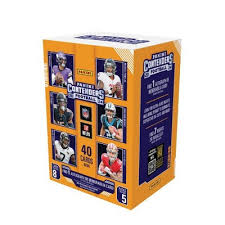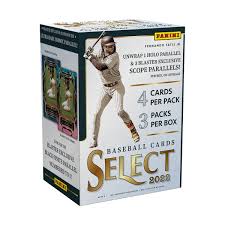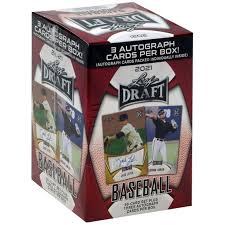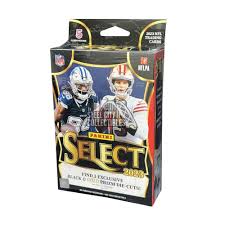

Magic: The Gathering is a solid and long-standing presence in the hobby. There are over 20,000 unique cards in existence, and overall, print runs number into several dozen billion cards. Yes. Billion. So, there must be something to it, right? If you want to find out, here is the full Intro To Magic: The Gathering.
READ: Magic The Gathering One Ring Arrives with $1 Million Bounty
Magic: The Gathering was designed by Richard Garfield and first released in 1993. It was released by the relatively new company Wizards of the Coast, located near Seattle.
The game was an immediate and massive hit. It sold out the initial print of 2.5 million cards within a month of release. The game soon went global, and a nerdy teenage me spent a good deal of the mid-90s playing it.
The company also released the original Pokémon Trading Card Game, though they lost the rights since then. By 1997, Wizards of the Coast was so big that they could afford to purchase TSR, the company behind Dungeons & Dragons. Yes, I played that too.
In a typical American capitalist monopoly consolidation move, game giant Hasbro bought the company in 1999. It has since streamlined the release of Magic: The Gathering, which can be found in all major retail outlets.
Unlike Pokemon, which has to some extent switched from being a game to a collector’s release, Magic remains primarily a gamer’s release. However, since the game is played through cards, it overlaps with the card-collecting hobby.
There are around 12 million Magic players worldwide.
In the game, each player takes the role of a powerful wizard known as a Planeswalker. Each Planeswalker does battle with the other players in an attempt to destroy them. A Planeswalker starts with a life total of 20 and dies when that number is reduced to zero.
Players lay cards that can represent spells, magic items, or deadly creatures. They serve to either protect the player from sustaining damage or help in its infliction on other Planeswalkers. These cards are pulled out of the deck at their disposal.
The game is played in two formats:
Aside from the traditional card game, there are online and video game variants of Magic. However, they are less relevant to the hobby.

The cards have a particular format. Though constricted, the cards are aesthetically pleasing and functional.
The top half has the card art and the name and mana cost of the card in question. The bottom half includes a poetic piece of text regarding the card. It also has practical parameters such as the type of card, what expansion it derives from, and its power and toughness.
In terms of gameplay, the two main types of cards are:
As we explained, there are five types of land. Each one represents a color. The colors have meaning. Do you know how the wizard in Lord of the Rings switched from Gandalf the Grey to Gandalf the White? If you are reading this, you probably do. Well, colors in magic (and Magic) have significance.
What does each color represent? Glad you asked:

The game has a strong component of skill and strategy. In addition, the planning element comes to the fore, most notably in the construction of a deck.
A player needs to match the suitable lands to spells and create enough variety to deal with different scenarios. However, by having many of certain types of cards, players increase the odds of having the mana needed to activate spells at the right moment. Probably the most common strategy is to build a deck around two colors.
If you run out of cards, you lose. So you might be thinking it’s best to overload. But too many cards can water down the pack and prevent you from drawing the cards you need when you need them. So 60 is the standard size. Typically, players will have around 25 lands in a deck this size.
Building a fabulous competitive deck is a long and challenging process. However, everyone must start somewhere. The best place is by obtaining one of several Wizards of the Coast free starter kits.
Look for a gaming store or event near you to see where you can get one. The best idea is to get a starter pack of each color and see which you prefer. If you can’t find a free one, there are starter decks available on Amazon for under 20$.
You can also play it online for free with Magic: The Gathering Arena. Download it here.
There is a thriving world of Magic: The Gathering competitions. They are run by a central organization called the DCI (Duelists’ Convocation International). All serious Magic competitions are DCI-sanctioned. Winners of the Pro Tour win $50,000.
The DCI maintains a ranking system not dissimilar to those in chess and tennis. Players are matched against comparable talent. There are also strict deck-building rules to preserve fair play and competitiveness. Usually, players are only allowed to use cards released in the last two years. These rules prevent veteran players from having the massive advantage that comes with “power creep.” It is also a convenient way to get people to buy newer cards.
Before new sets are released, the DCI runs prerelease tournaments. The competitions are highly desirable because they allow players a look at new cards before they are officially available.

In its almost 30-year history, Wizards of the Coast has put out many releases and expansions. These are divided into core sets and expansions.
As of now, there are 21 core sets and 87 expansion sets. As in many other card games and sets, the original releases are very highly considered. The original sets include all of the: Alpha/Beta/Unlimited cards.
As in any collecting arena, the value of Magic cards is generally determined by their rarity. However, since this is a game, their combat utility is also a factor in card desirability.
On an important note, all of these cards appeared in the earliest versions of MTG, namely Alpha and Beta. Because they are very powerful, they have been entered into the reserved list. That means they will not be reprinted to avoid harming their value on the secondary market.
Also, as we have already noted, these older cards cannot be played in official games anymore. Therefore, their value right now is primarily nostalgic and due to their rarity.
With those caveats out of the way, here are the most expensive and valuable Magic: The Gathering cards ever.
Every list I could find listed the Black Lotus as the top card, and maybe it is. But this one sold for a significantly higher price on eBay. Furthermore, it is a killer card because the artifact generates a red mana per turn, and those spells tend to cause the most damage. So, the Mox Ruby is a license to kill.
A graded version of this (Beckett 8.5) went for $100,000.
The grail card. You can’t do anything in this game without mana, and the Black Lotus gives you three for free. Unfortunately, they were only printed in limited numbers in the original sets, so they are scarce. It also has a cool name befitting a grail card.
The highest recent sale I could find on eBay was for $76,210. However, some have sold for far more in the past. For example, one went for $161,000 on eBay in 2019.

As you can see, the Mox cards are particularly valuable. The blue spells were only marginally weaker than the red in the original Magic releases (and that is a controversial point). So this card is the rough equivalent of the Mox Ruby.
A BGS 9 of this beauty went for $35,000 recently.
Another potent all-purpose card. It either allows you to draw three cards or forces your rival to draw three. By doing this, you create new winning options or suddenly take the other player’s deck away. Either way, awesome card.
One went on eBay for a cool $20,400.

The green equivalent of the aforementioned Mox Ruby and Mox Sapphire.
A BGS 9 of this went for $17,600.
Yup. Another day another Mox. This one is black.
A BGS 8.5 of this was sold for $16,326.

As its name suggests, this is a dual land of two powerful colors. It also has no downside or handicap to playing it, unlike current equivalents.
The card has a very hefty price tag for a land card, with a sale of $14,250 on eBay.
A card that gives the user an extra turn. When used correctly, this can win the game, especially in the early stages when the opponent is vulnerable.
A CGC (Comic Book Grading) 7 of this card went for $11,100.
While very similar to Time Walk, this card is a bit less useful. This is because the card remains in play and is easier to get rid of.
A BGS 9 of this card was sold for $7,100.

This card is part of the 1994 Revised Edition set, which had some severe problems with misprints. For example, the Hurricane card was supposed to have a green border but was printed with blue instead. The few blues ones that were released look great (way better than the green ones) and are very valuable due to their rarity.
One went for $6,900 on eBay in May.
It bears repeating; Magic is primarily a game and not an investment. It is very different from sports cards. It is rare to find old cards that are 10s and 9s because people are constantly playing the cards. The cards are mass-printed and never numbered. If that sounds like a recipe for a lower value, you are correct.
Nonetheless, as we have seen, vintage cards can be worth quite a bit. They are not printing Alpha and Beta cards anymore, and as you would expect, most have been thrown out or are heavily worn down over the years.
In addition, there has been a slowing down in the MTG market. If you are a sports card collector, you are pretty used to seeing Magic cards fully stocked and little or sports cards retail around. Vintage is still expensive, but in many cases has dropped significantly since 2016.
MTG is a game. It can make you some money under certain conditions, but the players don’t see themselves as investors. In addition, while very popular, it is not clear what kind of long-term staying power the game has. If the game loses popularity, the cards could be worth very little.
If you like card games and fantasy games, MTG is one of the best. We hope this intro to Magic: The Gathering has shown that. The artwork is consistently phenomenal. The players tend to be in a friendly and tight-knit community. Try it out and see if you like the game. I miss my playing days. But for-profit, look elsewhere.
I deep-dove on Fanatics Collect so you don't have to (but should you?)
Panini is launching a WNBA Product at $30,000!?
Topps Chrome 2024-25 Basketball: Honest Review and Notes
Did you know this SECRET about PSA slabs? #sportscard #tcg
5 EASY tips to make more money on eBay sports cards.
I opened a sports card mystery box and found something AWESOME inside
The SAD story of Collectable. What went wrong? (The Downfall Fractional Sports Card Investing)
what was Panini doing? 🙄





2022 Topps Heritage Baseball Blaster Box Configuration: 7 Packs per Box – 9 Cards per Box. Plus 1 extra pack.











Keep up on breaking Sports Card News, our latest articles, product specials and exclusive content with expert analysis of hobby trends.

© Copyright 2025 - All rights reserved Cardlines.com / Media Techs LLC - Sports Card News, Reviews, Releases and BREAKS - #thehobby.
Important: When you click on links to various merchants on this site and make a purchase, this can result in this site earning a commission. Affiliate programs and affiliations include, but are not limited to, the eBay Partner Network.
I Tested eBay Auction Promotions So You Don’t Have To!
Cardlines June 30, 2025 7:01 pm